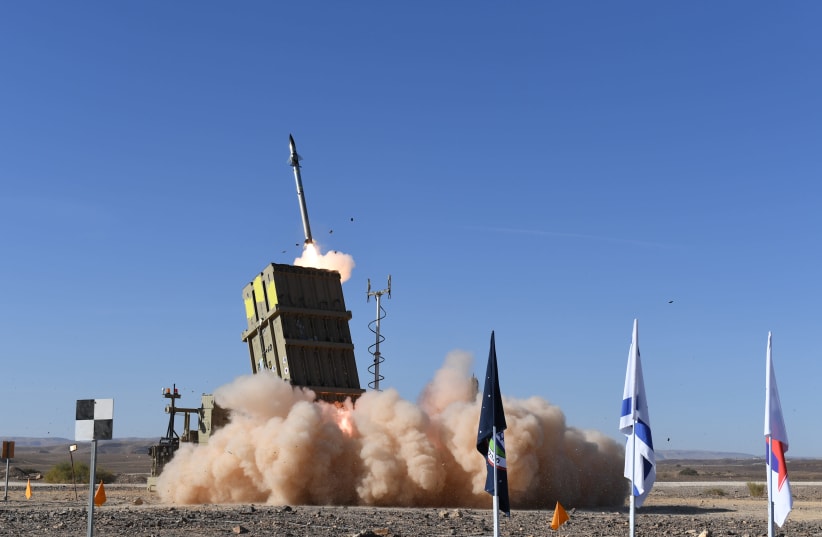While the test might be mostly remembered as the first time that the improved Iron Dome system – which is usually activated against short-range missiles – intercepted a cruise missile, its real significance is the way the Israeli air defense system combines between the three levels of its multi-layered defense operation.
The operation consisted of the Arrow system, which is used against long-range missiles; the second is David’s Sling, which is used against medium-range missiles; and the Iron Dome, which is designed to shoot down short-range rockets.
In this recent test, which was planned for over a year and included a series of tests before the live-fire interceptions, the IAF’s aerial defense operation managed to create a new formation that controls the three systems combined. For example, one of the interceptions was by a David’s Sling missile, which received a signal from the Arrow system.
A senior officer in the Israeli Air Defense Command told The Jerusalem Post that the intention of this new formation is to have more than one option of response to the different aerial threats that Israel is facing.
“We have here a comprehensive system,” he said.
“We don’t always succeed [to intercept] in one shot. This is why we have the ‘shoot-look-shoot, and we have more than one air defense system to prevent different threats.
“David’s Sling, for instance, is better at intercepting in higher altitudes, and also in this series of tests it was highly successful in intercepting cruise missiles,” the official added.
When asked when this system – that just passed its tests successfully – will become operation ready in the IDF, the source said that it will “happen in the short term.”
“We just finished the development phase, and within weeks – or a few months – after we finish training our soldiers, we could declare that it is fully operational,” he said.
“We call it now IOC – initial operational capability. This is in contrast to FOC – final operational capability – and that might take a while.”
David’s Sling became operational in April 2017 and was used for operative purposes only once – in July 2018. It was when two SS-21 Tochka tactical ballistic missiles were launched from Syria toward Mount Hermon. The system then failed to intercept the missiles.
The senior source said that since then the system underwent major improvements and became more precise.
“The system wasn’t developed enough yet back then. But we learned it, improved it, and advanced it.
“The system we are using now is completely different and improved – both on software and hardware. And we also learned a lot about it since then,” he said.
The source hinted that this series of tests is also a signal to those who send threats to Israel.
“We are in a leaning race against our enemy. There is an enemy who sits far away, and there is the proxy of this enemy who is closer. There are enemies who use cruise missiles, or rockets, or mortars, or long-range ballistic missiles. And it’s my job to make sure that we are prepared for all these scenarios.
“Some of them are concrete threats, and they are relevant as we speak tonight,” he said.
One unique thing that the source stressed is that a large portion of the aerial defense formation is being manned by women.
“Some 50% of our recruitment cycle are women. We are a completely egalitarian formation,” he said.
“These are young women who volunteer to be combat warriors.
“We have officers and warriors here. One of them is Noy, who intercepted a missile in the test,” he said.
“We have women as battery commanders and as deputy battalion commanders – we are a girl power,” he said.
